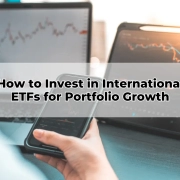Investment Risk Management
Understanding investment risk management and asset allocation
Volatility in the financial markets is nothing new. Asset prices have always experienced ups and downs, and there will always be risks inherent in investing. However, it’s important to remember that investing is a long-term play and the investment risk management is key. Over time, asset prices have tended to rise, despite periods of volatility. This is why the asset allocation is so important.
By diversifying your portfolio across different asset classes, you can help to protect the value of your investments and minimise the impact of market volatility. The asset allocation is not the perfect solution, but it’s one of the best tools we have for the investment risk management in the face of market uncertainty.
In times of market volatility, it’s also important to resist the temptation to try and time the markets. It’s impossible to predict exactly when prices will rise or fall, and even if you manage to make some short-term gains, you could end up missing out on longer-term returns. It’s far better to stay invested and ride out the ups and downs of the market.
Finally, it’s worth remembering that inflation is one of the biggest risks to holding cash. Over time, inflation can erode the value of your money, which is why it’s often better to invest in assets that have some upside potential, such as shares and property.

Market Volatility
The world can be thought of as an interconnected pyramid where promises hold society together—a house built on trust which starts to become shaky when belief fades. Trust in our financial system is essential to maintaining a healthy economy. It’s also what allows people and businesses alike, from all walks of life, to work together for mutual benefit.
Investing can be a tricky business. On the one hand, you want to find assets that are undervalued and have the potential to go up in price. On the other hand, you don’t want to overpay for an asset and watch your investment go down the drain. This balancing act is made even more difficult by the fact that asset prices are constantly changing. Sometimes, it can feel like the market is a roller coaster, with prices going up and down with no rhyme or reason.
In times like these, it’s important to remember that asset prices are only one part of the equation. The other, equally important part is the underlying fundamentals of the asset. Just because an asset has been going up in price doesn’t mean it’s a good investment. And just because an asset has been going down in price doesn’t mean it’s a bad investment. The key is to find assets that are undervalued relative to their fundamentals. And that’s where central bankers come in.

For years, central banks have been pumping money into the economy in an effort to increase economic activity. This “easy money” has found its way into asset prices, driving them up to levels that may not be sustainable in the long run. As investors come to realize this, some panic and sell off assets.
The Bottomline
When it comes to investing, it’s important to take the long view. There will always be ups and downs in the market, but over time, the market tends to go up. If you focus on the short-term noise, you’re likely to make bad decisions that can end up costing you a lot of money. It’s far better to get financial advice, develop a sound investment risk management strategy, and stick to it, even when the going gets tough. By ignoring the market noise and staying focused on your long-term goals, you’ll increase your chances of achieving success.










